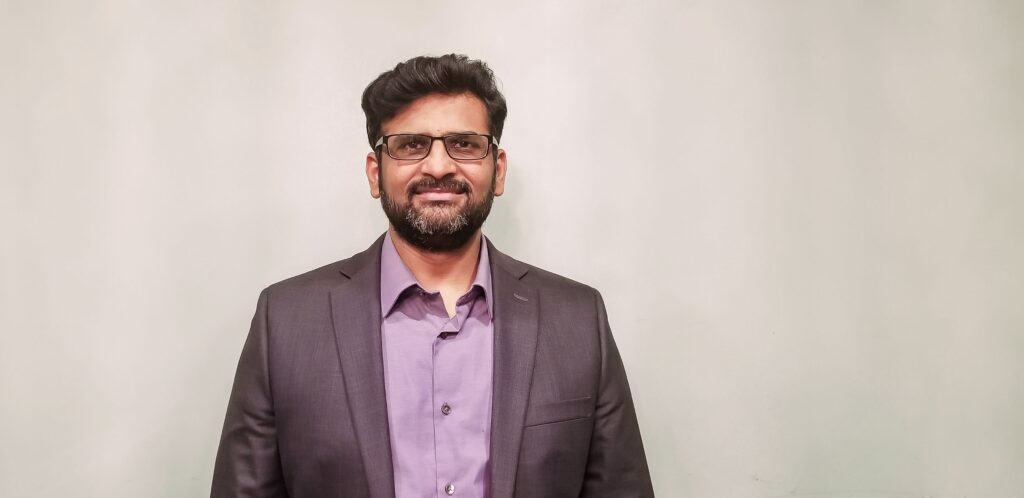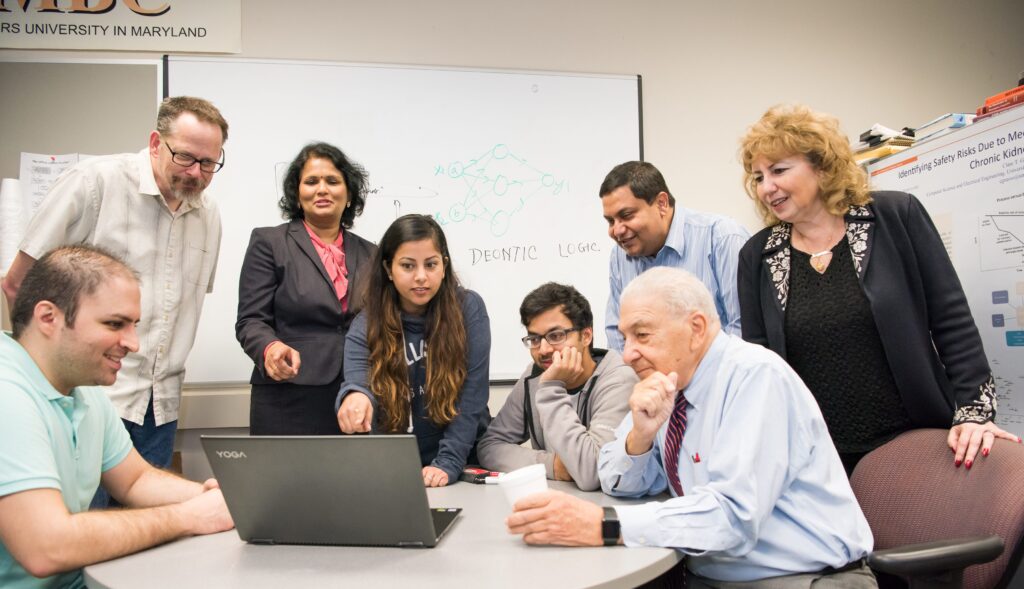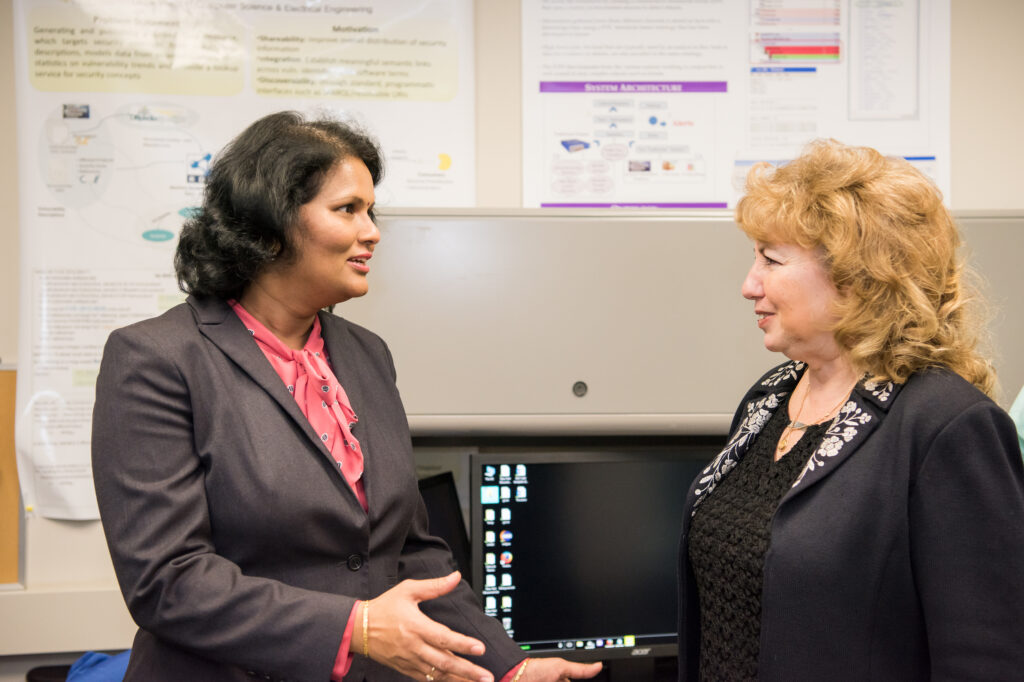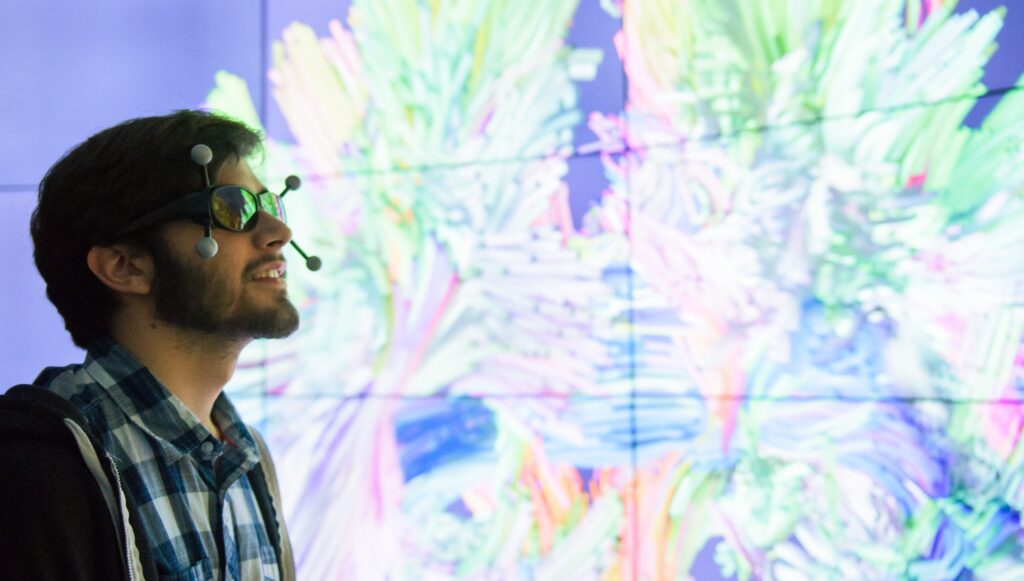The human hand is capable of exquisitely complex, coordinated movements. Ramana Vinjamuri hopes that, in the future, people will be able to control prosthetic hands and exoskeletons just as seamlessly, using signals from their brains.
Vinjamuri’s research on the interconnections between the brain and the hand is very personal. His mother had a stroke in 2014 and developed paralysis in her right hand. “The very hand that taught me how to draw and how to write is now paralyzed,” he says.
To tackle questions about how the brain signals body movements, Vinjamuri, assistant professor of computer science and electrical engineering (CSEE) and director of Sensorimotor Control Laboratory, is gathering a team of UMBC researchers and corporate and government partners. He received an Industry University Cooperative Research Center (IUCRC) planning grant from the National Science Foundation (NSF) in 2020, and he sees UMBC as perfectly situated to move this kind of high-impact research collaboration forward.

While other U.S. universities near urban centers may also have industry partners in their areas, Maryland and Washington, D.C. uniquely host a large number of national institutes and federal agencies, in addition to companies. This includes the NIH, NSF, NASA, and others. And UMBC has a strong track record. The UMBC-led Center for Accelerated Real Time Analytics (CARTA) has already found success as an IUCRC composed of multiple universities, industry partners, and government agencies.
Vinjamuri is proposing that UMBC join the Building Reliable Advances and Innovation in Neurotechnology (BRAIN) Center, a consortium led by Arizona State University and the University of Houston. His vision is to establish an East Coast BRAIN research hub to develop technologies that can help scientists better understand the nervous system and aid people with disabilities.
Benefits of collaboration
The NSF established the IUCRC program to offer academic researchers a framework for establishing long-term partnerships with industry and government agencies. In addition to providing funding, the program gives graduate students unique research experiences that can set them on a path to high-impact careers.
“They learn how to work in a team, together with professionals from industry and the government,” says Yelena Yesha, distinguished university professor of CSEE and director of CARTA.

Corporate partners and government agencies also benefit since they gain the expertise of academic researchers. “It’s a win-win,” Vinjamuri says.
Representatives of each center’s member institutions meet twice a year to make updates to the consortium’s research goals. These meetings provide an opportunity for industry and government partners to highlight their priorities in particular areas, says Dean Drake, associate vice president for research at UMBC.
And the partners have a financial stake in the success of the IUCRC: Each year they pay membership fees that go toward the costs of research.
From big data to actionable data
UMBC has been the lead university for CARTA, a multi-institution IUCRC, since its inception in 2018. The consortium’s roots are in the Center for Hybrid Multicore Productivity Research (CHMPR), founded in 2009. CHMPR aimed to develop advanced computing technologies to tackle complex problems of national priority, from human health to climate change. As large datasets gained widespread use, the researchers shifted their focus to new areas and CARTA was born.
“Big data by itself is trouble; what is really needed is actionable data,” Yesha says.
CARTA researchers are focused on real-time analytics, or how to interpret large amounts of data to make decisions quickly. For example, one project is exploring the use of blockchain, the distributed technology underlying bitcoin and other cryptocurrencies, to optimize supply chains.

In addition to UMBC, CARTA includes higher education partners North Carolina State University, Rutgers University–New Brunswick, Rutgers University–Newark, and Tel Aviv University. Some of UMBC’s industry and government partners are the data management company Seagate Technology, financial services firm Morgan-Stanley, Department of Homeland Security, and NASA.
“The challenges we examine require a convergence of technologies,” Yesha says. “Having the resources that come from all these different institutions at the table—as well as the brainpower—enables us to tackle these types of problems.”
Advancing neurotechnology
In proposing UMBC as a future BRAIN site, Vinjamuri hopes to connect with medical centers, companies, and government agencies specifically seeking to accelerate neurotechnology research. Neurotechnology is a broad discipline that includes everything from methods for measuring brain activity to tools for analyzing clinical data to human-centered computing, the focus of Vinjamuri’s research.
The proposed UMBC BRAIN site will have three additional research themes: artificial intelligence, led by Nilanjan Banerjee, professor of CSEE and director of the Mobile, Pervasive, and Sensor Systems Lab; neural signal processing, led by Tülay Adali, distinguished university professor of CSEE and director of the Machine Learning for Signal Processing Lab; and virtual reality, led by Don Engel, assistant professor of CSEE and director of the Assistive Visualization and Artificial Intelligence Lab.

Due to the coronavirus pandemic, the planning grant timeline has been extended for an additional year. The funds will be used to hold a conference in upcoming fall 2021, to recruit potential industry and government partners for the proposed BRAIN site. Vinjamuri and colleagues will then prepare a formal proposal to join the BRAIN consortium.
“These collaborations across universities, industry, and government are critical to the success of carrying this research out to society,” says Drake, “to meet our most pressing needs.”
Banner image: 3D-Printed Prosthetic Hand, 2013. Photo by M.R.Nuckels. CC by 4.0. All other photos by Marlayna Demond ’11 for UMBC unless otherwise noted.
Article written by Jack J. Lee for UMBC News.


